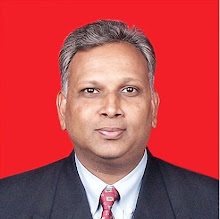Very few mediahouses now practiseserious journalismas the media isinfected by the‘market bug’andeditorial contenthas given wayto ‘brandpositioning
| |
The logic was that the editorial content wasnot as relevant as brand positioning. As itturned out subsequently that top editors,including those who defined their jobs ofheading news organisations as the “secondmost important job in the country after theprime minister,”capitulated to market forces.Interestingly, this metamorphosis of mediacoincided with the advent of liberalisation ofthe economy in 1991. This past has significant bearing onchanging face of the media.“Page 3”became apowerful culture of the news much to thechagrin of old timers who were out of tunewith the dynamics of market forces. As thejostling among new social elites becameintense for getting space in the page 3, theserious news content and sanctity of the editorial page in national newspapers were pushedto the background. All these developments led to a logicaldenouement; new heroes of market forcesnow dominate the socio-political agenda aspage 3 culture spreads to news and editorialcontent in national newspapers while someregional news organisations remain the onlynotable exceptions.This past is being recounted only to explain the transformation ofmedia, particularly electronic media, inproper perspective. Just as mainstream print media wasundergoing a change, a 30 minute bulletineither in the form of “aajtak or world thisweek” provided a refreshing break from themonotony of newspapers. As a reporter I could very well recall as how disgusted I feltwhen there was country-wide rumour aboutGanesh idols sipping milk.There was no wayany newspapers could have countered thoserumours as effectively as a few secondsclipping of a cobbler’s shoe anvil sipping themilk like Ganesh idol shown in a 30 minuteHindi bulletin by legendary editor SP Singh.Of course efficacy of the visuals inconveying story is far more powerful than the print. But SP Singh’s legacy was overtakenagain by market forces as many 24 hour newschannels came into existence. Like newspapers’ circulation, a dubious method of TRPrating is devised to measure a channel’s popularity. In the past two decades, the ever-growingsize of the middle class can safely be attributed to new economy. The television-densitygrew manifold and so has grown the revenue pie particularly for the electronic media. Andall TV channels are now pushed to no-holdsbarred battle which is essentially to maximizerevenue.Even those media barons and editorswho swear by high standard of journalisticethics day in and day out virtually encouragejournalists to act like mercenaries. The most glaring example of this approach was the coverage of Arushi-Hemrajmurder case. Though there was enough evidence to prove the incompetence of the UPpolice, most of the news channels went out ofthe way to prove culpability of the haplessfamily of the victim in the crime. Even juicystories of character-assassination were putout by some channels and newspapers without bothering to verify the veracity of thefacts. Since the double murder case evokedunparalleled curiosity all over the country,most news channels were in cut-throat competition to draw eyeballs.And they succeededin titillating the audience,drawing more eyeballs. In the process, they may have resortedto falsehoods. But that does not matter solong as they succeed in their ultimate objective. This is the precise reason visuals of awife-bashing husband or a car without driverrunning all over Ihave particularly referred to raging debate of the ’80s and ’90s about journalism toemphasise that the media’s transformationat present is nothing but an extension of thepast. The young and brash owner of thenational newspaper who compared newspapers with toothpastes appears to be a manwith foresight.News has become a commodity which sells. But there is a positive side too to theelectronic media that cannot be ignored.When a child (Prince) slipped into a borewell,the visuals of hapless child beamed on TVnetworks mobilised all resources to rescuehim.Similarly the hype created by the mediaon the release of the prime accused in theJessica Lal murder case -- son of a powerfulHaryana minister -- prompted the high courtto review the case. It is different matter thatthis Haryana leader now himself owns anews channel. Obviously the lumpen capitalchurned out of new economic boom is takingits toll on the media .But this is not the end ofthe story. (The writer is Political Editor,‘News X’).’ |

No comments:
Post a Comment